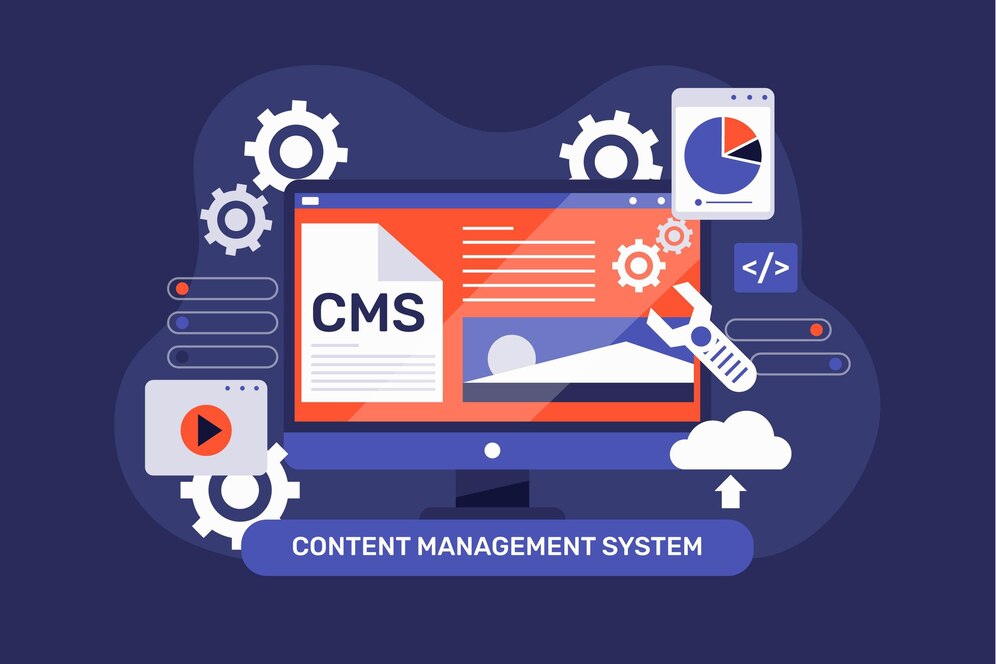What is a Content Management System (CMS)?
Imagine having to code every blog post, image update, or product page manually. That’s what the early days of the internet looked like. A content management systems eliminates that hassle by offering a user-friendly interface where content can be created, edited, and published — all without touching a line of code.
Why Are CMSs So Relevant Today?
In an era where content is king, businesses, bloggers, and eCommerce platforms need tools that help them push out quality content consistently and quickly. Content management systems have become the backbone of modern digital infrastructure.
The Evolution of Content Management
From Static HTML to Dynamic CMS
Once upon a time, websites were hard-coded in HTML. Updating them was tedious, expensive, and slow. With CMSs, dynamic content became the norm, making sites more interactive and user-centric.
The Digital Transformation Era
As businesses transitioned online, content became crucial for branding, SEO, and customer engagement. CMSs empowered companies to keep up with the pace of this digital transformation.
Key Components of a CMS
Content Creation and Editing Tools
CMSs offer intuitive WYSIWYG editors (What You See Is What You Get), enabling users to format text, insert media, and design pages without programming knowledge.
User Roles and Permissions
From authors to editors and admins, a good CMS allows role-based access, ensuring the right people control the right features.
Media Management
Image libraries, video uploaders, and audio embedding tools are all part of modern CMSs, making multimedia management a breeze.
Version Control and Audit Trails
Changes are tracked, enabling rollbacks and understanding who did what and when — essential for collaborative environments.
Popular Types of CMS Platforms
Open-Source CMSs
Platforms like WordPress, Joomla, and Drupal are free and highly customizable.
Proprietary CMSs
These include platforms like Adobe Experience Manager and Sitecore — ideal for enterprise-level needs.
Headless CMSs
A rising trend, headless CMSs like Contentful or Strapi separate content storage from its display layer, allowing content delivery across multiple platforms.
SaaS CMSs
Platforms like Wix and Squarespace offer hosted CMS services, ideal for small businesses or individuals seeking simplicity.
The Role of CMS in Website Development
Developers no longer need to start from scratch. CMSs provide pre-built themes, templates, and modules, enabling faster launches and easier maintenance.
Collaboration between developers, marketers, and content creators becomes seamless with versioning, role management, and modular content blocks.
Advantages of Using Content Management Systems
Ease of Use
Even non-technical users can update websites, add blog posts, or launch landing pages.
SEO Features
Most CMSs come equipped with plugins or built-in tools for optimizing metadata, generating sitemaps, and managing redirects.
Scalability and Customization
Whether you’re running a small blog or a large eCommerce store, a CMS can grow with you thanks to modular design and third-party extensions.
Time Efficiency
Updates that once took days can now be made in minutes.
Lower Maintenance
Scheduled updates, plugin automation, and cloud hosting reduce the burden on IT teams.
Content Management Systems and SEO
CMSs simplify SEO management. You can add meta descriptions, optimize URLs, and integrate schema markup — all in one place.
Mobile optimization, performance plugins, and AMP support make your site Google-friendly, giving you an edge in SERPs.
CMS in eCommerce
A CMS can manage complex catalogs, support payment gateways, and run personalized marketing campaigns — crucial for conversion.
Platforms like Shopify and WooCommerce allow full control over inventory, pricing, and promotions through CMS dashboards.
CMS for Blogging and Publishing
Bloggers love CMSs for their editorial tools. Schedule posts, set approval workflows, and monetize content using built-in or third-party tools.
Platforms like Ghost focus exclusively on content writing and speed, making them ideal for publishers.
CMS and Security
Security is non-negotiable. CMSs today come with SSL support, user authentication tools, and regular patch updates.
Plugins can add firewall protection, bot detection, and even real-time monitoring to safeguard your data.
CMS and Omnichannel Content Delivery
With a headless CMS, you can publish the same content to your website, mobile app, smart devices, and social channels — simultaneously and seamlessly.
Personalized experiences can be created for different user segments without duplicating content.
Customization and Flexibility
With vast libraries of themes and plugins, users can build everything from a fashion blog to a corporate portal.
Developer APIs enable integration with CRMs, analytics, ERPs, and third-party marketing tools.
Choosing the Right CMS for Your Business
Identify your business goals, audience, and growth plans. A small blog may thrive on WordPress, while an enterprise may require Drupal or Adobe Experience Manager.
Budget and in-house technical skills should also influence your decision.
Challenges with Content Management Systems
There’s no silver bullet. CMSs can sometimes be bloated with plugins or pose integration issues.
Migrating from one CMS to another can be technically demanding and time-consuming.
The Future of Content Management Systems
Expect tighter AI integration — think automated tagging, personalized content suggestions, and predictive analytics.
Voice-optimized content and hyper-personalization will redefine how CMSs manage and deliver content in the coming years.
Conclusion
Content management systems have revolutionized the way the digital world creates and manages content. They’re no longer optional — they’re foundational. Whether you’re launching a blog, building an eCommerce site, or running a global brand, the right CMS will empower your team, streamline your workflow, and enhance your digital presence. Choose wisely, and you’ll reap the benefits for years to come.
